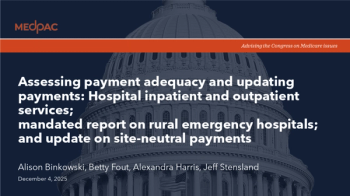
|Slideshows|April 17, 2020
4 ways to prevent phishing attacks at your practice
Author(s)Todd Shryock, Logan Lutton
Phishing is one of the most common methods hackers will use to attempt a digital break-in. Here’s how to protect your data.
Advertisement
Newsletter
Stay informed and empowered with Medical Economics enewsletter, delivering expert insights, financial strategies, practice management tips and technology trends — tailored for today’s physicians.
Advertisement
Latest CME
Advertisement
Advertisement
Trending on Medical Economics
1
ACIP revises recommendation for universal infant vaccination against hepatitis B
2
Physicians taking back medicine: The rising toll of private equity in health care
3
How far will patients go for primary care? Survey finds travel thresholds vary
4
Improving patient financial experience: A strategic imperative
5
















